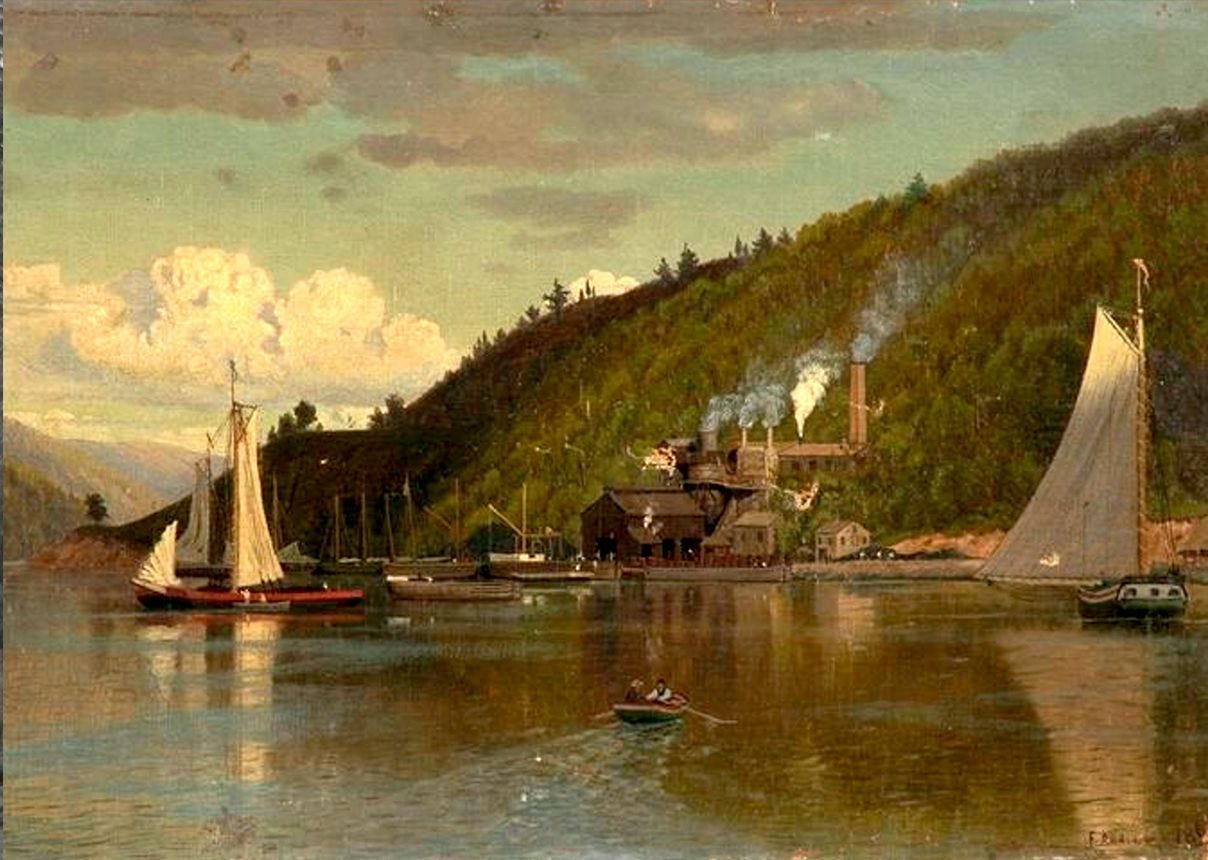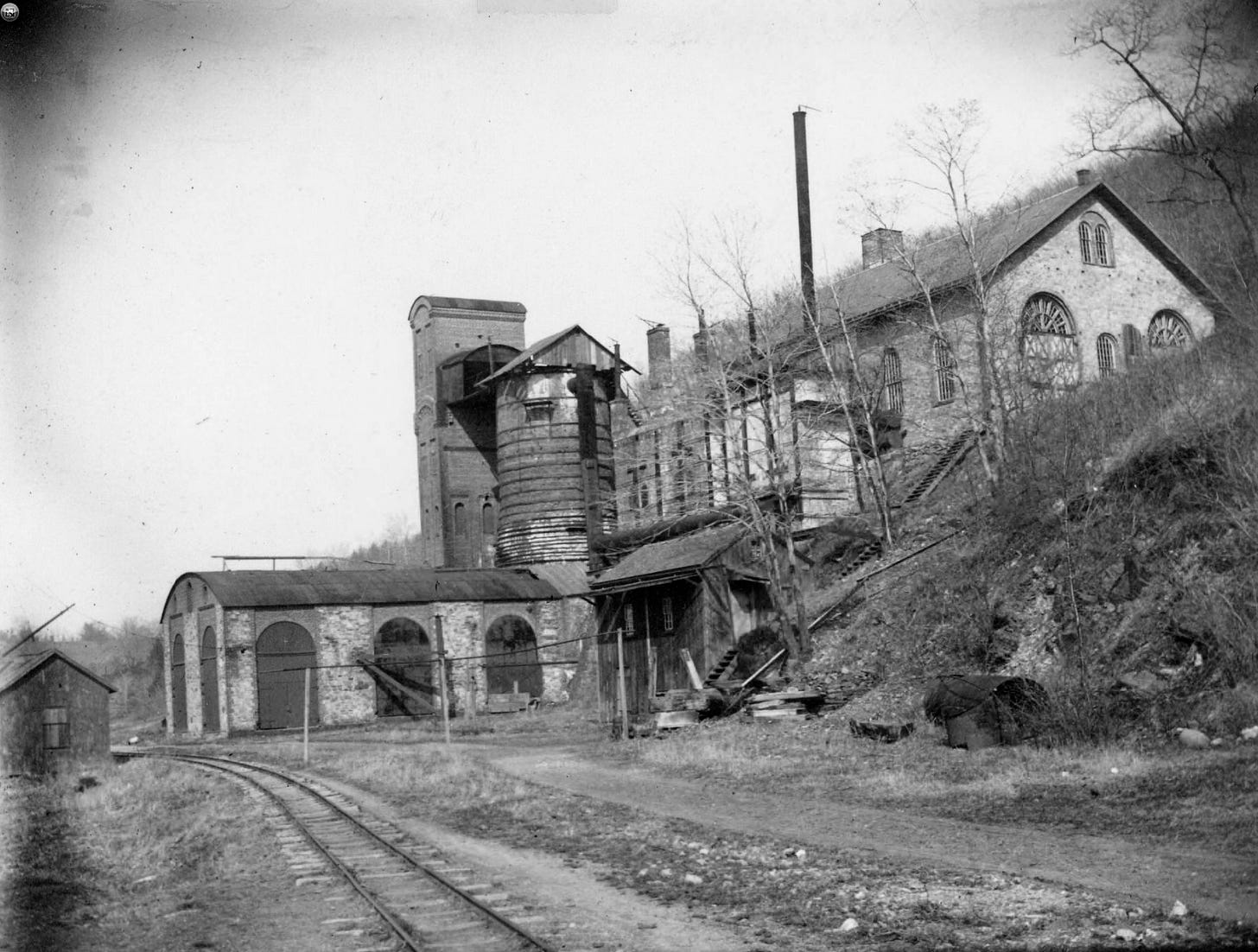Local history: "Lost Annsville," a beautifully illustrated talk by historian Kirk Moldoff, at the Croton Free Library.
Just up the Hudson River in Peekskill, a tiny hamlet was home to some of the region's first industries. The capitalists were enriched, and so was our artistic heritage.
Note: This post is free to all readers, but not all of our articles are or can be. We know Crotonites can’t be everywhere, but the Chronicle tries to be. Please support local journalism by taking out a paid subscription. See details below.
The luminous painting above is by Frank Anderson, an inventor who painted in our region during the second half of the 19th century. Anderson is often considered a member of the Hudson River School, although he was not nearly as well known as some of its most famous members, such as Thomas Cole or Frederic Edwin Church. Nevertheless, he did exhibit some of his paintings at the Pennsylvania Academy of the Fine Arts and the National Academy of Design in New York. Many of his works are privately held and are rarely seen as a result.
That made a talk by local historian Kirk Moldoff at the Croton Free Library last Thursday, June 13, all the more compelling. Out of more than 200 images Moldoff showed the audience during a lecture that took just over an hour, a number featured paintings, drawings, and sketches by Anderson. The artist was one of the most important chroniclers of the industries that arose in the middle to late 19th century in the tiny hamlet of Annsville, on the shores of the creek with the same name.
After an introduction by Croton Village Historian Marc Cheshire, who had invited Moldoff to speak here, the historian launched into a talk that included not only the history of these early local industries—which included a lampblack factory, a wire mill, and a chemical factory, among others—but also a primer on how these products were made, accompanied by still more illustrations and photographs.
To orient us geographically, Moldoff said that the location of some of these industries today corresponds roughly with the location of Jim Reed Truck Sales, named after the late great NASCAR driver (some members of Reed’s family were in attendance.) Another landmark is the former site of Fort Independence, on the north side of Annsville Creek, which played an important part in the American Revolution.
Much of the property in the area was originally owned by Pierre van Cortlandt, and Annsville was purportedly named after his sister. Industry needs water power, and with three brooks flowing into Annsville Creek, it was the perfect spot for local capitalist enterprise. The 18th century entrepreneur John Keating had a paper mill here, and Van Cortlandt himself ran a paper mill in the early 1800s. Moldoff pointed out that good paper in those days was made of rags, and showed an illustration of a huge machine that pounded the rags until they were as thin as, uh, paper.
Brick making was also an important industry here. At one time there were 28 small brickyards between Peekskill and Croton, Moldoff said.
Other industries included a factory founded in 1829 that made oakum, formed of hemp mixed with oils and pine tars and used to caulk ships, and a tobacco factory that operated from 1829 to 1861, back in the days when a lot of tobacco was grown in this area.
A little later Annsville became the site of lampblack factories, including one founded by Joseph Binney, which eventually spawned the crayola industry to the delight of millions of children then and now. And the late 1880s saw the founding of iron and wire making industries. While most of the wire was used in industry and for electric lines, an important early use was to make hoop skirts, Moldoff said, illustrating the point with a number of well chosen slides.
Fortunately, Frank Anderson, sometimes called “The Painter of Peekskill,” was on hand to record a lot of these industrial developments. That’s because, as Moldoff related in his talk, the Annsville industries were periodically hit with fires, with whole factories burning down to the ground. Thus Binney’s lampblack factory burned down in 1879, although it employed at most ten workers. But when the wire mill, which employed about 300 out of the 400-500 people who lived in the hamlet, burned down in 1883, most of the population scattered “to the four winds,” Moldoff told the Chronicle in response to a followup question.
Perhaps if transportation to Annsville had been better, the hamlet could have survived these setbacks. But the railroad crossing there had created a silting problem, and sloops could no longer navigate the creek without great difficulty, despite some efforts at dredging. The extension of a narrow gauge railroad to the site did not ultimately solve the problem.
“The fate of tiny Annsville was sealed,” Moldoff said, its memory only kept alive by the efforts of local historians like his good self.
To share this post, or to share The Croton Chronicle, please click on these buttons:
Comments policy: Please be polite, respectful, and to the point.









I only knew of Annsville Circle on the way up to Bear Mt. I had no clue it was a hamlet and held a more detailed history behind the name. What fascinating history and a beautiful painting. Thank you for this article. Hudson Valley History is fascinating.